Knowing about the tricky window and windshield tinting laws is a must for those who want to use vehicle window tints. Before installing any tint, you must understand the legal window tint percentage for your state. This article breaks down these laws in detail. So, read on!
What Are Window Tint Percentages?

Tint percentages, simply stated, are the percentage of the visible light that a vehicle tint allows to pass through it. In other words, tint percentage defines the Visible Light Transmission (VLT) of the tint material. Window tints with a lower percentage will allow little light to pass through, making the windows dark.
For example, a 20% or 30% tint will allow less light than 50% and 70% tints to cross it. This is because the former will allow only 35% of the total light to pass through them. On the other hand, a 70% tint will let 70% of the visible light inside the vehicle, making it well-lit.
Understanding VLT (Visible Light Transmission)
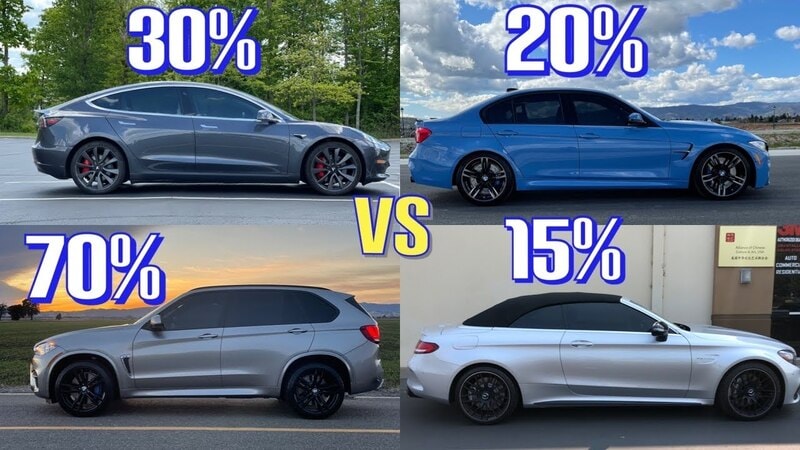
Understanding VLT is crucial to understanding the science behind tint percentages. VLT determines the level of darkness inside your vehicles after tints are used. A higher VLT percentage means more light will be passed through the window tint film. On the contrary, lower VLT will make the tint dark, allowing little light to pass through.
Your chosen window tint percentage is an important factor that affects the following:
- Visibility: Dark tints with less VLT percentage will reduce significant glare. This will reduce visibility, making it harder to see at night.
- Privacy: Darker tints will also offer more privacy inside the vehicle. These tints won’t allow people from outside to see inside your car.
- Legal Compliance: For each state and region, there are well-defined laws about vehicle window tinting and how dark it can be. The tint you choose must adhere to your local tinting laws.
Different Window Tint Percentages Comparison
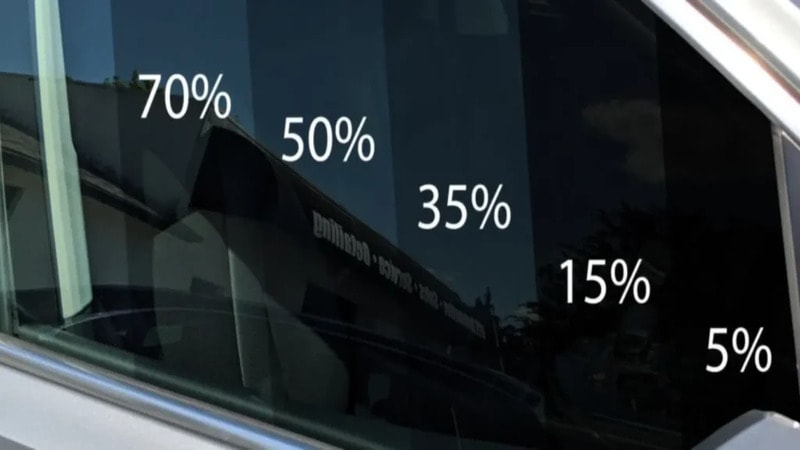
Here is a concise, yet insightful, comparison of different tint percentages in terms of what they offer:
| Tint Percentages | Description | Used For |
|---|---|---|
| 5% (Limo Tint) | Very dark tint that allows little light inside | Limousines, VIP vehicles, privacy |
| 20% Tint | Common factory tint that is dark and offers privacy | Moderate privacy with great heat and light reduction |
| 30% Tint | Optimal tint choice for generic use. Offers good visibility while blocking significant light and heat. | Common public vehicles, stylish aesthetic appeal |
| 50% Tint | Lighter tint that works quite well for glare reduction | UV and heat reduction without hindering visibility |
| 70%+ Tint | Very light tint. Offers full visibility with little heat reduction | Glare and UV radiation blocking without reducing visibility |
Pros and Cons of Different Tint Levels
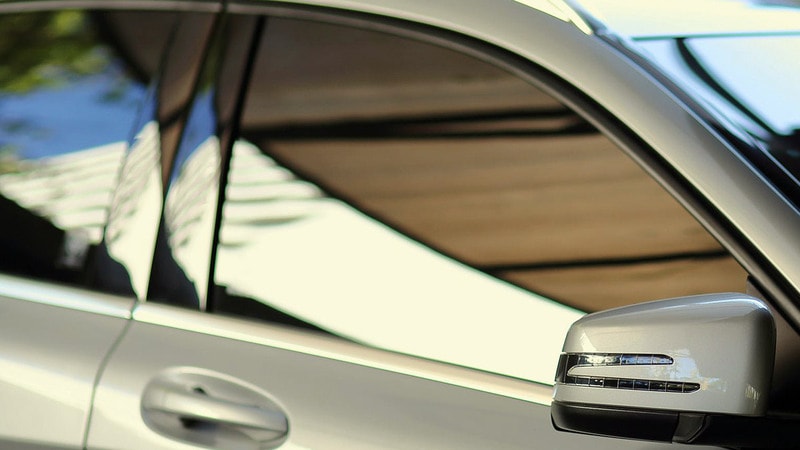
Let us now take a look at some common pros and cons of different levels of tint percentages:
5% (Limo Tint)

Pros:
- Great privacy since outsiders can’t see inside the car at all
- Great heat and glare reduction
- Looks very premium and stylish
Cons:
- Greatly impacts visibility at night, making driving more challenging.
- Illegal in most regions due to safety concerns.
- It can be misused by criminals, making it difficult for law enforcement to see inside the vehicle.
- Hinders visibility when reversing and parking.
20% Tint
Pros:
- Offers a good level of privacy since its hard for outsiders to see inside
- 20% Window tint is common to find
- Good ability of glare reduction and heat blockage
Cons:
- Low visibility during night
- The vehicle becomes too dark at night and during cloudy weather
- Illegal in most regions
30% Tint
Pros:
- Neither too dark, nor too light. This is a perfectly balanced tint choice
- Stylish and aesthetic
- 30% window tints offer significant glare and infrared heat rejection
Cons:
- Offers moderate levels of privacy
- Still illegal in most regions
50% Tint
Pros:
- 50% tints offer good visibility while reducing glare
- Offers UV and sun protection
- Widely legal
Cons:
- Offers little privacy
- The car’s interior can get very dark when its cloudy outside
- limited glare reduction
70%+ Tint
Pros:
- Almost clear tints offering full visibility
- Block UV and Heat
- Fully legal in almost all states
Cons:
- 70% tint doesn’t offer any privacy
- Don’t add to the aesthetics of the car
Legal Window Tint Percentages: State-wise Laws
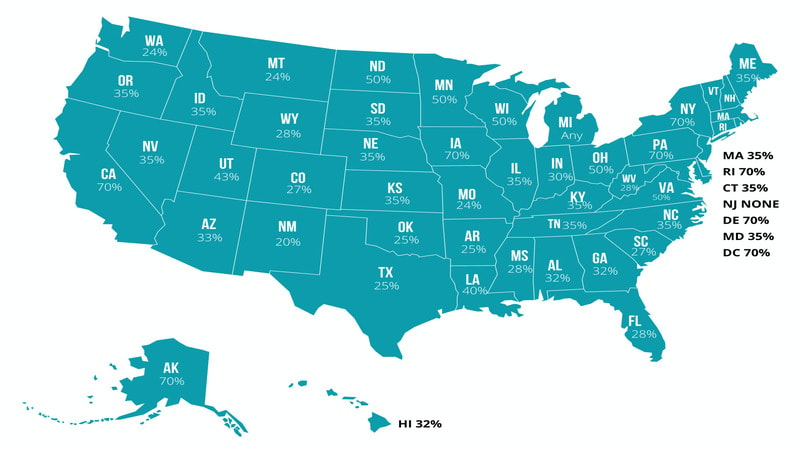
Department of motor vehicles and traffic in all countries and states have different laws for how much tinting they can allow. Below is a table rounding up most of the regions’ and states’ laws for tinting.
Front vs. Rear Window Regulations – What’s Legal?
Here’s a break down of what’s allowed and what’s illegal when it comes to tinting rear and front windows of your vehicle. Knowing about these details make sure your expense on window tinting doesn’t go waste when you remove the tints because of the fear of penalties.

- Front Windows: Mostly have very strict laws with well-defined tinting levels to comply with. This is to ensure drivers and pedestrians safety.
- Rear Windows: These windows can mostly be tinted darker than front windows. This is because these have nothing to do with a driver’s ability to see.
- Rear Windshield: Mostly can be fully tinted since they also don’t really concern the drivers much anymore.
- Windshield Strip: In regions where fully tinted windshields aren’t allowed, a little top strip can be tinted darkly to reduce glare.
Medical Exemptions For Tinted Window Laws
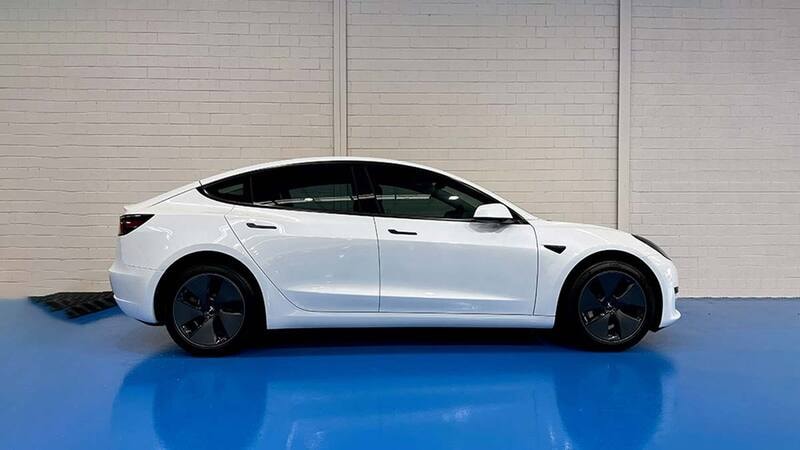
People with certain medical conditions are often exempted from the regular laws regarding tinted windows in most states. Some states even go as far as allowing a very dark tint for medically challenged people with light sensitivity.
Some conditions where extra dark tints are allowed to fight with light-sensitivity and other medical conditions are:
- Albinism
- Cancer (Corneal or skin)
- Lupus
- Eye-related diseases
- Conditions of photosensitivity
However, people still need some proof of their medical conditions for police to not charge them for extra dark tinted windows. Typically, you’d need a note from doctor, DMW approval, and special sticker or permit for your tints.
Tint Ticket Fines and How to Avoid Them
Choosing the right window tinting percentage is essential to avoid fines. If your window tint level crosses the darkest legal tint meters, you’re sure to be penalized. You can expect a warning or a fine of $50 to $250 for the first violation. Following this, if your window tint percentage still doesn’t comply with the law, your fine can exceed up to $500.

People who are charged with repeated offense of illegal tints may also be asked to appear in a court and their licenses can be confiscated. Its best to measure your tint percentages roughly after they are installed on your own.
How to Avoid Fines?
If you want to prevent fines, you can take the following measures:
- Always stay updated about the state tint laws
- Only use a legal tint that has an allowed VLT percentage
- If medically challenged, keep your medical exemption certification with you
- Always check tint levels before driving a car that hasn’t been tinted by you
Automotive Tint Laws Explained
Car window tinting laws are important for road safety and overall social security. These laws are intricate and a bit tricky to understand because they vary with vehicle types and tint percentage. Tinting laws sometimes also differ depending on where the tint is applied.
Comprehensive understanding of these laws can save you from penalties, legal issues, disruptions during driving, and more.
Why Do Tint Laws Exist?
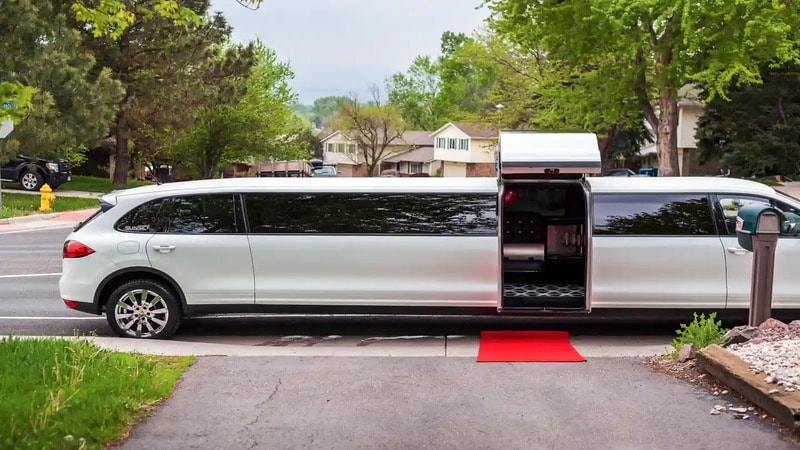
This is a common question asked by many drivers. Window tint laws are important for several reasons. Some of these are as under:
Safety Reasons
- Darker tints can reduce nighttime visibility, making itchallenging to maneuver. It gets difficult to park or reverse, putting the passengers and drivers in danger.
- Darker tints also make it hard for drivers to see the pedestrians, cyclists, or animals on the road, putting the passersby’s life at risk.
Law and Order Enforcement
- Very dark tints might be used by criminals as a way to hide hostages and criminal activities inside vehicles.
- Police needs to see inside some vehicles for security reasons.
Differences in Tint Laws Between Sedans, SUVs, and Trucks
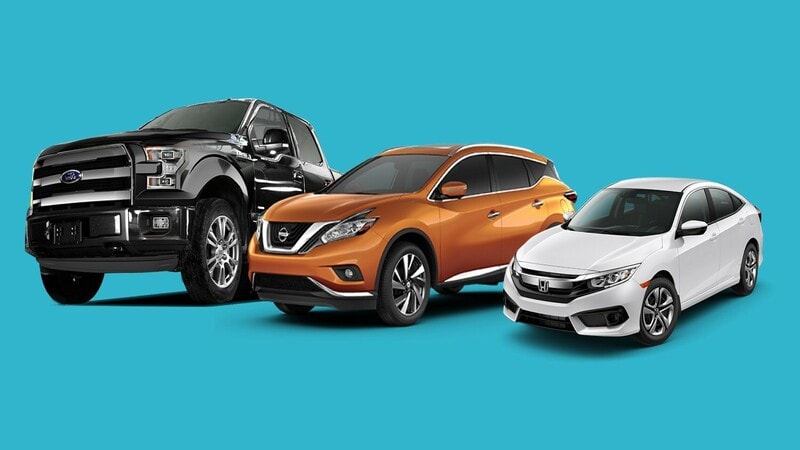
Unlike vehicle wrapping that’s allowed to everyone in most states, there exist different laws for different vehicle types when it comes to tinting. If you own SUV or truck, you probably face lenient laws. Vehicles that serve commercial purposes are often allowed more tinting than personal-use vehicles. Here’s a breakdown of the differences in tinting laws:
Sedans:
- Front Windows: Mostly 50% to 70% tints are allowedfor a sedan’s front windows.
- Rear Windows: Tint percentage of these windows must match the front windows.
- Rear Windshields: Sedan’s rear windshields are often required to have different VLT levels. These VLT levels are often more than those required by windows, offering better visibility from the rear.
SUVs and Trucks:
- Front Windows: Similar to sedans. 50% to 70% tints are allowed
- Rear Windows: Mostly have no restrictions. You can use any tint level here.
- Rear Windshields: Most states allow fully tinted rear windshields with no law dictating any limits for these.
Reflective and Colored Tints – Are They Legal?
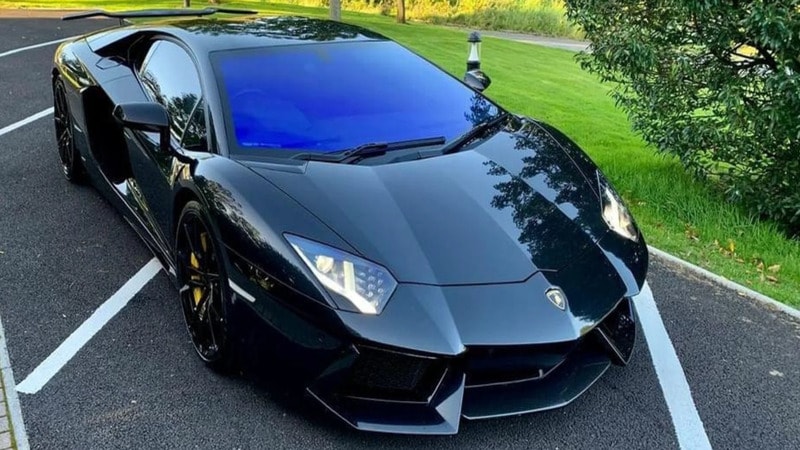
Many states have well-defined regulations regarding reflective and colored window tints. These window tints often inflict more safety concerns than regular tints.
Reflective tints are made up of multiple metallic elements. These tints reduce the amount of heat and glare passing through them in a significant manner. At the same time, reflective tints have low visibility and can cause issues for drivers as well as outsiders.
The low visibility explains the strict laws against these tints in most regions. Reflective tints are completely banned in most of the states. In others, tints that allow only 20% to 30% reflectivity are allowed.
Colored tints are also illegal in most regions. Colors like blue, red, amber, and yellow are especially frowned upon because the imitate the emergency vehicle lights. However, some states have no issue if you use neutral colored tints.
Key Terms and Terminology in Window Tinting Laws
The understanding of legal terminology regarding window tinting is important. Knowing these terms can ensure a better understanding and compliance with the laws. Here are some of these terms you must know:
- Visible Light Transmission (VLT) – VLT refers to the amount or percentage of light that a window tint allows to pass through it. The higher is the VLT, the lighter will be the tint and vice-versa.
- AS-1 Line – This is a point marked on vehicle windshields to indicate the screen area where tinting can be done.
- Reflectivity – This refers to how much light a window tint can reflect to reduce glare and heat.
Window Tint Types With Pros & Cons

- Dyed Tint – This is a budget-friendly tinting option for added privacy and glare reduction. The dye can fade with time and start offering limited glare and heat rejection.
- Ceramic Tint – Ceramic window tint is a premium tint that offers great heat and UV rejection. It is durable and lasts long. However, its very expensive.
- Metallic Tint – This sleek tint is very strong and blocks a lot of glare and heat. The thickness of this tint can interfere with signals and GPS.
- Carbon Tint – A durable tint that offers strong heat and UV reduction without interfering with the signals. This tint is, however, a bit expensive compared to ceramic tint.
How Law Enforcement Measures Window Tint?

Traffic police and other law enforcement personnel have specialized devices to measure the levels of window tints of vehicles. These devices are called tint meters thatcan tell the level of tinting on the window glass.
Usually, a police officer will use a meter to check your vehicle’s tint percentage on traffic stop. This device display the tint percentage when touched on the window. If the tint amount exceeds the legally allowed limit, the driver is fined and often asked to remove the tints.
Medical Exemptions for Window Tint Percentages
Drivers who suffer from certain medical conditions are exempt from tinting laws. These individuals can request for exemption based on medical reasons that require them to use dark tints.
Governments have specially dictated exemptions to help those with photosensitivity. Cleaning your tints properly also helps people with photosensitivity to avoid selective glare in streaks.
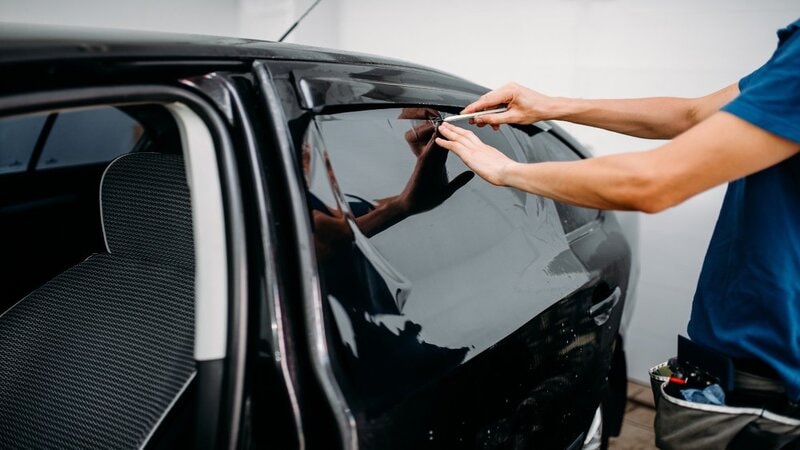
These medical exemptions also differ from state to state. Some states allow people to have fully dark windows, while others have restricted exemptions.
How Tint Percentage Affects Visibility?
In simple words, tint percentage is inversely proportional to tint visibility. A high tint percentage means the tint has great visibility while a lower percentage means that the tint is darker and offers little visibility.
The legality of tints and their VLT restrictions are measured in percentages. Lower percentages are mostly illegal since they can hinder visibility and are unsafe for drivers and pedestrians alike.
Choosing the Best Window Tint for Your Vehicle
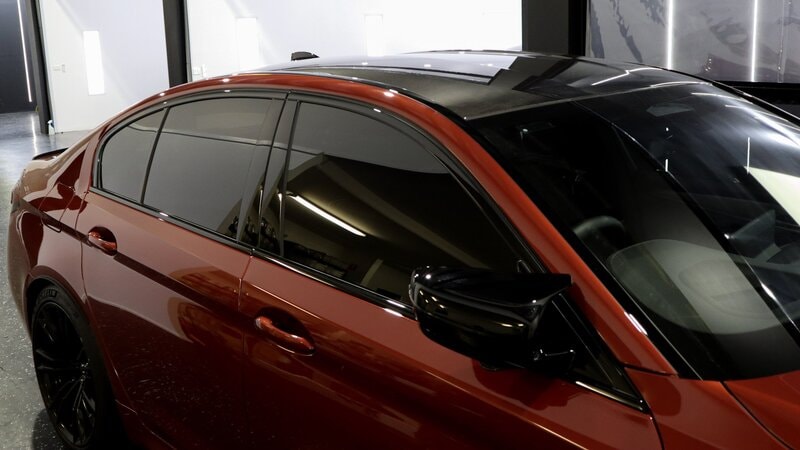
Choosing the best tint for your car windows is an easy task. You simply have to consider the basic pros and cons for tinting, your preferences aligned with state laws. Here are some things to consider to get the best window tinting for your vehicles:
- Visible Light Transmittance (VLT): Going for lower VLT will give you a very dark and private tint that has limited visibility. Check with your local laws to see what VLT you can choose.
- UV Protection: Depending on where you live and your heat sensitivity levels, you can go for darker tints or lighter ones. The higher the tint percentage, the better UV protection it provides.
- Heat Rejection: If you live in a hot region, go for dark tints with strong infrared rays blocking ability. This can best serve the purpose of keeping the vehicle interiors cool.
Another important factor to consider while choosing the tint is to go for renowned window tint brands for premium tint finish and look.
FAQs
What is the darkest percentage of tint that’s legal?
The maximum legal tint percentage depends on your region as its not same for every country. Usually, most countries only allow tinting percentages close to 30% or 35%.
Which tint is darker among 20% or 35% tint?
20% window tint looks darker than 35% tint. This is because the 20% tint allows only 20% of the light inside while for the 35% tint, the light being passed is more.
Is there any state where 5% tint is legal?
5% tint is mostly illegal for common vehicles in most states. However, it is allowed for VIP vehicles like limousines. Some states that have lenient laws for 5% tint include Arkansas, New Mexico, and Montana
Conclusion
Window tinting laws can vary depending on where you live. More than anyone, your auto business with multiple vehicles should comply with these laws to prevent penalties and reputational loss.
We advise going for expert tint solutions providers that guarantee seamless application, perfect finishing, and compliance with laws too.
Get Professional-looking Legal Tinting For Your Business Fleet Today!
Let our experts at Car Like give you legal and premium window tinting solutions compliant with your respective state. Do not let fleet vehicle window tinting mistakes put your business’s reputation at risk!
Contact us today to get quality, law-compliant vehicle tints for enhanced privacy and reduce glare while keeping your vehicle interiors cool. Let’s get your business thriving penalty-free!



